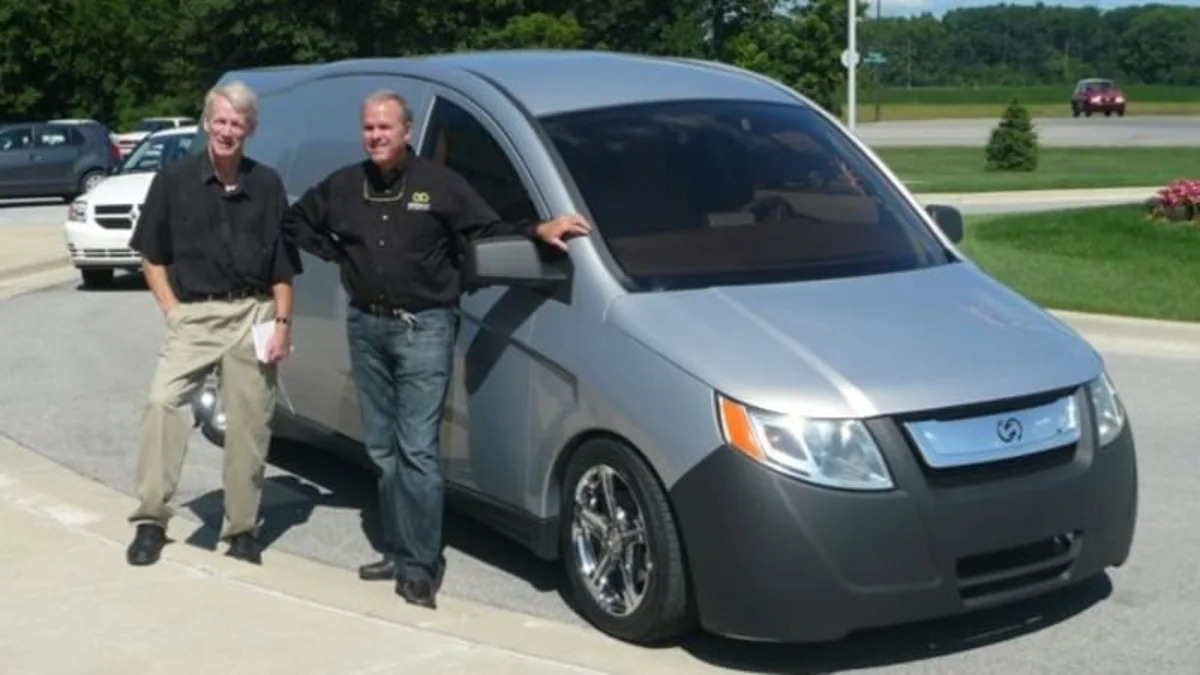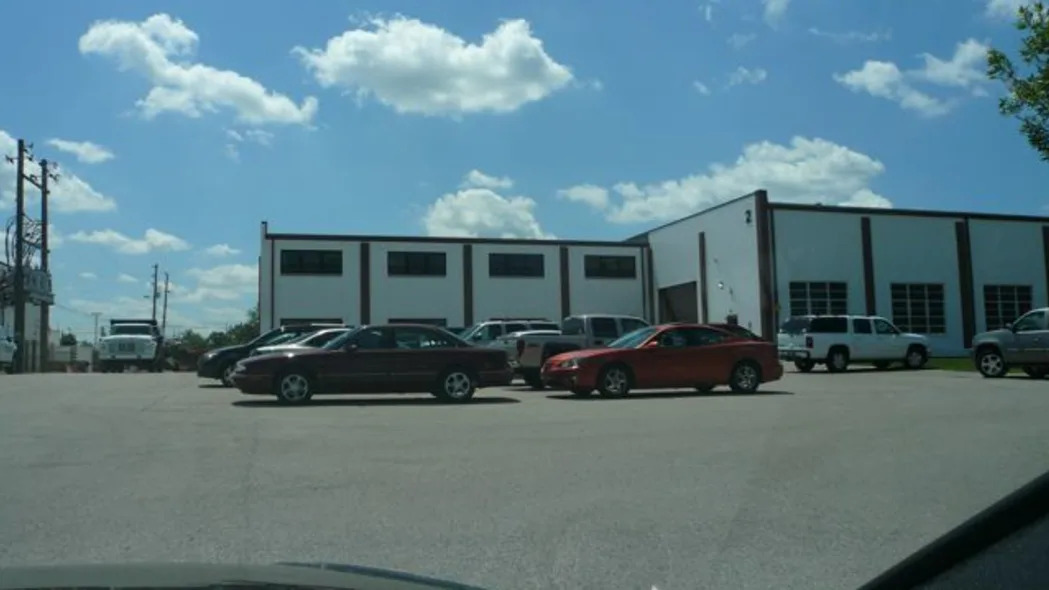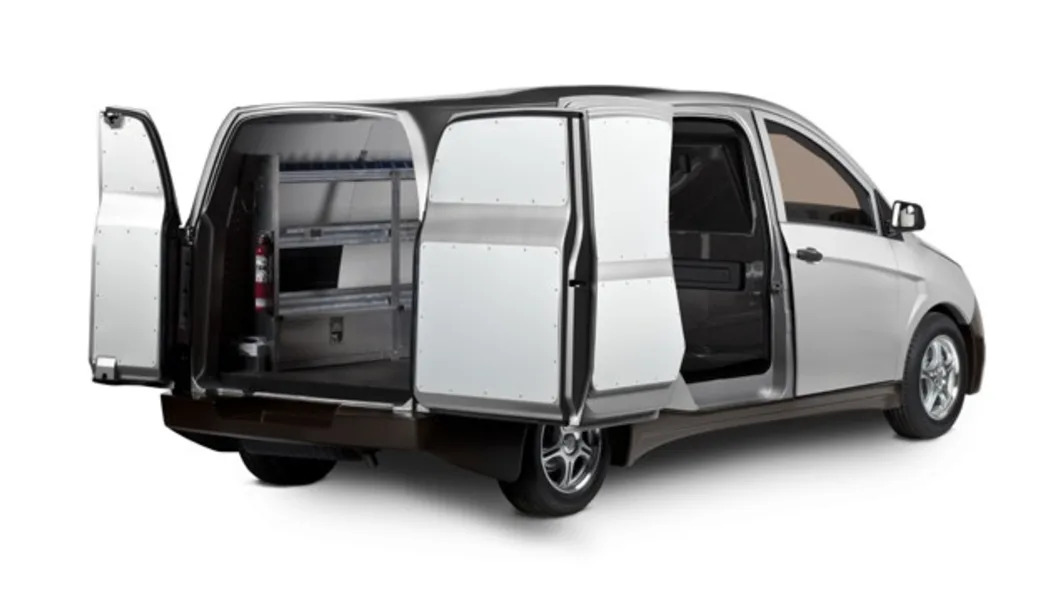The IDEA plug-in hybrid van from Bright Automotive was unveiled earlier this year in Washington, D.C. and it's already time for the first test drives to start. Plug in vehicle advocate Paul Scott was recently given the opportunity to visit Bright's Indiana headquarters and see what moving the duck-like van is all about. His first impression: the van gets a B+ for building a PHEV van that works but still needs some upgrades to make the shift from pure electric drive to when the ICE kicks in more smooth. Scott writes:
The IDEA is a 100 mpge (see clarification here) van that weighs just 3,200 lbs. and can go 30 miles on battery power alone. With a slippery coefficient of drag of under .3, the van can use a small 10 kWh battery pack. The company wants to move to high-volume production (50,000 units a year) in late 2012. Bright Automotive came out of stealth mode in January and is made up of people who have a lot of experience with thinking about how to best build a tremendously efficient vehicle, including some who spent time at the Rocky Mountain Institute. For more on the thoughts churning at Bright Automotive, check out this recent editorial from Bright Automotive CEO John Waters calling for more DOE and government funding for automotive entrepreneurs. Like, for example, a little company called Bright Automotive.
Read Scott's full write-up after the jump.All in all, I was very impressed that they've come this far this fast. I fully expect they'll have the vehicle in A+ shape in a matter of months.
The IDEA is a 100 mpge (see clarification here) van that weighs just 3,200 lbs. and can go 30 miles on battery power alone. With a slippery coefficient of drag of under .3, the van can use a small 10 kWh battery pack. The company wants to move to high-volume production (50,000 units a year) in late 2012. Bright Automotive came out of stealth mode in January and is made up of people who have a lot of experience with thinking about how to best build a tremendously efficient vehicle, including some who spent time at the Rocky Mountain Institute. For more on the thoughts churning at Bright Automotive, check out this recent editorial from Bright Automotive CEO John Waters calling for more DOE and government funding for automotive entrepreneurs. Like, for example, a little company called Bright Automotive.
[Source: Paul Scott]
FROM PAUL SCOTT:
This past Friday, I got to drive an Idea.
Bright Automotive, a start up based in Anderson, Indiana, about as heartland USA as you can get, is poised to become a very successful company. I've written about them a couple of times based on news items and their own press releases, but this time, I'm writing based on first hand experience. Full disclosure, they paid my airfare and bought me lunch.
The team at Bright consists of many of the same engineers responsible for the EV1. Starting with CEO, John Waters, and including engineers like Sean Stanley and Jeff Ronning in addition to battery experts like Kurt Rogge. Several members of the team have spent time at the prestigious Rocky Mountain Institute (RMI), Amory Lovins' think tank in Snowmass, CO dedicated to efficiency. Other team members, such as Dave Busch, come from equally sterling backgrounds at engineering powerhouse Aerovironment where he worked on the precursor to the EV1 under the tutalege of "Engineer of the Century", Paul MacCready, whose biography is entitled, "Doing More With Less". This seemed to be the mantra at Bright Automotive, a company with one of the most competent teams of EV engineers anywhere.
They are singularly focused on one goal, to make the most efficient and cost effective plug-in hybrid delivery van in the world.
I was surprised to learn that much of the work on the EV1 had been conducted in nearby Indianapolis. Turns out, Indiana has been home to over a hundred car companies in years past and once vied with Detroit as the car capitol of the U.S. John Waters drove me to a nondescript group of buildings on the north side of Indianapolis where he told me he had worked on the battery pack that powered the EV1 and spoke at length of the historic efforts of their team that created the "Car That Could".
Toward the end of "Who Killed the Electric car?", Ralph Nader lambasts GM executives for their part in killing the EV1, but he pointedly excepted the engineers who he says really did want to make a better car. These are the guys Nader was talking about.
After GM's bean counters unceremoniously killed the EV program, Waters spent some time at RMI where he again got the bug to get back into electric vehicles. RMI's "Hypercar" program had piqued his interest in efficient vehicles, and a key meeting with Amory Lovins and people from Google and ALCOA convinced him to make the leap. They arranged a meeting with the head of the postal service's fleet services and came away convinced they could make a plug-in hybrid that could economically compete with existing postal delivery trucks and save a lot of energy in the process. In early 2008, Waters assembled his team with ex-EV1 engineers from RMI, Aerovironment and at least one protege of Professor Andy Frank of UC Davis, the "Grandfather of the plug-in hybrid". Thus was born Bright Automotive.
 With Paul MacCready's "do more with less" mantra constantly in mind, they set about to design a vehicle that could haul a full ton of cargo with 180 cubic feet of space, yet travel up to 30 miles on electric power alone before the internal combustion engine kicked in. This would enable most postal vehicles to deliver their routes without burning any gas, and allow fleet operators needing more range to average as much as 100 mpg.
With Paul MacCready's "do more with less" mantra constantly in mind, they set about to design a vehicle that could haul a full ton of cargo with 180 cubic feet of space, yet travel up to 30 miles on electric power alone before the internal combustion engine kicked in. This would enable most postal vehicles to deliver their routes without burning any gas, and allow fleet operators needing more range to average as much as 100 mpg.The key to success lay in doing this without making the vehicle cost too much relative to the existing internal combustion vehicles. With a judicious use of aluminum for the frame and skin, they were able to keep the weight to a remarkably low 3200 lbs, and their design team managed a drag coefficient of less than .3, very slick for a delivery van. This meant they could achieve their 30 mile all-electric range with a very modest 10 kWh battery pack.
The team is replete with experts in design and drivetrains, but it's their battery expertise that sets them apart from most start ups of this nature. They have decided to remain agnostic as to the cell manufacturer and will try out any LiIon cell that comes their way, although they are currently using lithium iron phosphate cells from EIG in Korea. Their testing equipment is the state of the art ABC 150 from Aerovironment which can replicate charging profiles of an infinite nature, and their dynometer room can test batteries in both hot and cold weather conditions. Their expertise with batteries is such that they will offer to package cells into battery packs for hire since not all OEMs have their depth of knowledge.
So, how did the test drive go? I've had the opportunity to drive both the Tesla Roadster and BMW's super quick Mini E, so I had to re-calibrate my expectations some, this is a delivery van after all, but I'll give them a strong B+. The acceleration was pretty good, but when the internal combustion kicked in, it was noticeable. Talking to the drivetrain team of Sean Stanley and Patrick Kaufman, they assured me that would be smoothed out soon. All in all, I was very impressed that they've come this far this fast. I fully expect they'll have the vehicle in A+ shape in a matter of months.
So, how soon will these clean-running vans begin replacing the noisy and dirty postal carriers plying our roads? Well, like Tesla Motors, they've applied for a loan from the Department of Energy's Advanced Technology Vehicle Manufacturing Incentive Program. Telsa, along with Ford and Nissan have already been awarded their loans and they are all in the process of hiring thousands in California, Michigan and Tennessee, respectively, to staff up to build plug-in vehicles and batteries. Bright has not yet heard about their loan yet, but I would be amazed if the DOE didn't see the promise I saw in this company. The fleet vehicle niche is a large one consisting of hundreds of thousands of vehicles used by private and public fleets throughout the country. The sooner these fleets get vehicles that allow them to use cleaner, cheaper, domestic electricity instead of dirty, expensive, foreign oil, the better.




Sign in to post
Please sign in to leave a comment.
Continue